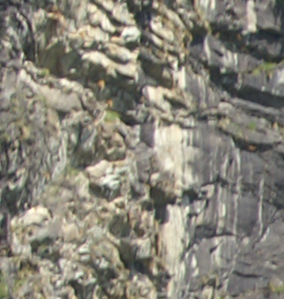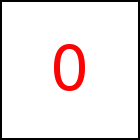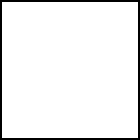Some First Examples - taccGL™ Canvas Library Tutorial
First Example
A taccgl™-animation is a collection of taccgl™-transitions.
Each transition shows one or more visual effect(s) (e.g. a motion, a color, or
blend effect) of a single actor. Actors can be very different things,
ranging from simple geomentical shapes like triangles and
rectangles over (images of) HTML elements, possibly mapped on
boxes, cylinders etc. to 3D-objects created with a 3D modelling
program.
taccgl™-animations are initially set up by javaScript. Then they run
independently (if possible on the GPU), in parallel to the normal operation of
the web page (until altered or controlled by further javasSript programs).
For example the following javaScript code
var transition = taccgl.actor('firstdiv'); transition . rotateMiddle(1,0,0); transition . duration(5); transition . start(); | RUN |
starts rotating this paragraph, i.e. the HTML element with the id="firstdiv". The var
statement in the first line defines a single transition named transition.
Then transition. rotateMiddle(1, 0, 0) defines this transition
to perform, when executing, a rotation around around the (1,0,0)
axis (i.e.the x axis).
transition. duration(5) selects a 5 seconds duration for the transition.
Finally transition.start() starts the transition.
Please click on the RUN-button above to run the example.
Although the example at a first glance might look as a simple CSS animation,
taccgl™ in fact bypasses the DOM, CSS, and javaScript bottelneck of browsers
and almost completely performes the animations via WebGL™ inside the GPU.
Therefore animations are very fast (provided there is good GPU support) and
because no DOM nodes are created, animations can have huge numbers of actors.
Try yourself to run the example
50-times or
100-times
or slice/split the element into
10,
50, or
500 slices
and rotate these individually in a sequence.
Concise Notation
The example can be rewritten in the following more concise notion (using taccgl™s
Fluent Interface;
the transition methods rotateMiddle and duration
return the current transition object as result):
taccgl.actor('firstdiv') . rotateMiddle(1,0,0) . duration(5). start(); | RUN |
This notion can also be read as follows: first select an element using actor, then set transition kind(s) and parameters.
Later we will explain, that instead of just one element multiple elements can be selected. It is also possible to select other items,
such as parts or slices of elements, 3D objects from model files, etc. and then set transition kind(s) and parameters for all the items
at once.
Running the Example
To run the first example on your pages you need to include the taccgl™
library in the head or your document and somewhere place a link to start the animation
Show full sample code.
In order to run the first simple example you need to add two lines to a page:
- In the head of an HTML page the library needs to be included. If you downloaded taccgl™ use the code
<script src="/taccgl062/taccgl.js"></script> | |
or otherwise for testing purposes without downloading
<script src="/taccgl062/taccgl.js"></script> | |
- Somewhere in the text a link to run an animation is needed
<a href="javascript: taccgl.actor('myel') . rotateMiddle(0,1,0) . start(); taccgl.start()">Run</a> | |
This example rotates an HTML element on the page with the id="myel".
A Complete running HTML page ( firstExample.html )
:
<!DOCTYPE HTML> <html> <head> <meta http-equiv="X-UA-Compatible" content="IE=11" /> <title> taccgl Tutorial - First Example </title> <script src="/taccgl062/taccgl.js"></script> </head> <body> <div id="myel" style="background-color:silver; width:300px; padding:15px; border: solid black 1px"> <h1> My first Example </h1> <p> This is a first example of a rotating page. </p> <p> <a href="javascript: taccgl.actor('myel').rotateMiddle(0,1,0).start(); taccgl.start('no epilepsy warning')">Run</a> </p> </div> </body> | |
The code written in green is the
piece of JavaScript code defining a transition. The
subsequent taccgl.start() then plays the animation.
Most of the tutorial and the manual concentrates on explaining this green
code.
Second Example : External 3D Model
The second example animates a 3D model created with a 3D modelling
program such as Blender.
The actor method generally has a second parameter, that determines
the shape or kind of the actor to be shown. The first parameter denotes
an HTML element which defines where the actor should appear.
var loadedModel = taccgl.objFile().read( '/tutorial/obj/secondExample.obj'); taccgl.actor("examplediv", loadedModel.scene()) . rotateMiddle(0,1,0) .duration(10) .start(); | RUN |
<div id="examplediv"
style="width:150px;
height:150px;
border:1px solid black">
Placeholder example DIV
</div>
The first line of this example loads the 3D model.
The second line is very similar to the first example above.
It just adds a second parameter to the actor method loadedModel.scene()
to show the 3D model. rotatemiddle, duration, and start are used as in the first example.
In this example the designated HTML element ("examplediv" in this case) acts
as a placeholder, where the 3D object is shown. The element itself is hidden while
the animation is playing.
In contrast in the following example, the HTML element is mapped on the 3D object:
var loadedModel = taccgl.objFile().read( '/objtest/roundcube/roundcube1.obj'); taccgl.actor("examplediv", loadedModel.scene()) . rotateMiddle(1,1,1) . duration(10) .start(); | RUN |
Multiple 3D Labels
can be placed

You can place various External 3D Models on a single HTML page
and align them with different HTML elements, Multiple Scenes
and combine them with various shapes Basic Shapes.
It is also possible to select objects from an external 3D model and to apply various
animations,
Multiple Object Animations.
See the full sample code
of the second example. This also demonstrates the use of a javaScript function for
writing the animation, which is very helpful for animations longer than the first example.
In order to run the second example you need include the taccgl™ library, as
described with the first example, you need to add the link starting the animation and
the function definition at the end.
This example shows a 3D cube loaded from an external model file created with blender.
A Complete running HTML page ( secondExample.html )
:
<!DOCTYPE HTML> <html> <head> <title> taccgl Tutorial - Second Example </title> <script src="taccgl062/taccgl.js"></script> <meta http-equiv="X-UA-Compatible" content="IE=11" /> </head> <body> <div id="examplediv" style="background-color:silver; margin-left:200px; margin-bottom:100px; margin-top:100px; width:200px; padding-left:15px; padding-right:15px; padding-top:20px; padding-bottom:20px; border: solid black 1px"> <h1> My Second Example </h1> <p> This is a second example of a rotating 3D model. </p> <p> <a href="javascript:doAnimation()">Run</a> </p> </div> <script> function doAnimation () { var loadedModel = taccgl.objFile().read( '/objtest/roundcube/roundcube1.obj'); taccgl.actor("examplediv", loadedModel.scene()) . modFit(). rotateMiddle(1,1,0) . duration(10) .start(); taccgl.start(); } </script> </body> </html> | |
The function definition doAnimation contains the
javaScript code defining the animation. The
subsequent taccgl.start() then plays the animation.
Most of the tutorial and the manual concentrates on explaining the code inside the function defintion.
Third Example(s) : Combination of Multiple Motions and Transitions
<div id="examplediv2"
style="width:150px;
height:150px;
border:1px solid black">
Placeholder example DIV
</div>
The following examples show three ways of combining the rotation
from the first example with a linear motion.
Using from({x:0,oy:1000}) a motion from x-coordinate 0 and from 1000px
below is specified. The first example creates two transitions and shows two
copied of the blue box, one copy rotating and one copy moving. The second example
applies both motions to the same transition showing the blue box rotating
and moving simultaneously. The third example creates two transitions that
via the cont() functions perform sequentially, first move and then
rotate the blue box.
taccgl.actor('examplediv2') . rotateMiddle(0,0,1) . start(); taccgl.actor('examplediv2') . from({x:0,oy:1000}) . start(); | RUN |
taccgl.actor('examplediv2') . rotateMiddle(0,1,0) . from({x:0,oy:1000}) . start(); | RUN |
taccgl.actor('examplediv2') . from({x:0,oy:1000}) . start(). cont() . rotateMiddle(0,1,0) . start(); | RUN |
Fourth Examples : Box and Flexible

In the next example the HTML element with id Rock2 is an
image showing the texture from a rock. You can map this HTML element
on a 3D-Box and move and rotate this box. actor gets
the second parameter taccgl.dddBox in this case.
taccgl™ can display various Basic Shapes this way.
One of these is called taccgl.flexiBorder. Is deforms
the surface of the HTML element according to a mathematical function:
In the second example this is a Circle and in the third example a
cylinder.
taccgl.actor('Rock',taccgl.dddBox) . rotateMiddle(1,1,1). from({ox:-500,oy:-500,oz:1400}) . duration(5). start(); | RUN |
taccgl.actor('Rock',taccgl.flexiBorder) . Circle1 () . duration(5). start(); | RUN |
taccgl.actor('Rock',taccgl.flexiBorder) . nparts(50) .Flip(0,0,6*Math.PI/4,6*Math.PI/4) .rotateMiddle (1,1,0). duration(5). start(); | RUN |
Fifth Examples : Multiple Selectors
It is possible to define transitions on multiple elements with a single statement,
such as rotating all links on this page. taccgl.mTagName('a') selects all HTML
elements with tag name a (i.e. all a tags).
The second example below makes all h2-headlines move in from the right
and slow down smoothly (Accelerated Motion, vEnd).
taccgl.mTagName('a') . paint(). hide(). visAtEnd() . rotateMiddle(0,1,0) . start(); | RUN |
taccgl.mTagName('h2') . paint(). hide(). visAtEnd() . from({x:0,rx:-1}).vEnd(0,0,0) . start(); | RUN |
Also parts of HTML elements can be selected. sliceH(5) for example cuts
the selected Rock element into 5 horizontal slices. sequence (4) then performs
the specified animation for each part in a sequence and showAfter() shows
the animated parts also after the motion is finished.
taccgl.ma('Rock2'). paint(). sliceH(5). to({oy:-500}) . sequence (4). showAfter(). start() | RUN |
taccgl.ma('Rock2'). paint(). sliceH(20). to({oy:-500}) . sequence (4). showAfter(). start() | RUN |

Using sliceH and sliceV an element can be cut
into horizontal parts and then each into vertical pieces.
The mp method gets a function as parameter that is performed
for each element individually. In the second example below
mp( t=> t.startTime(Math.random())) is used to assign
each part an random starting time.
The third and fourth examples are a bit more complicated and described
in detail in section Selectors for Multiple Transitions.
taccgl.ma('Rock2'). paint(). hide(). visFinal() . sliceH(3). sliceV(3). rotateMiddle(.7,.7,0) . sequence(5,-3). showBefore(). showAfter(). start(); | RUN |
taccgl.ma('Rock2') . paint(). hide(). visFinal() . sliceH(3). sliceV(3). rotateMiddle(.7,.7,1) . mp( t=> t.startTime(Math.random())). showBefore(). showAfter(). start(); | RUN |
taccgl.ma('Rock2'). paint() . hide(). visFinal() . showbefore(). sliceH(24) . sliceV(24) . alpha(1,-0.3). dur(2) . mp ( t=>{ t . to({ox:2000*Math.random()-1000,oy:2000*Math.random()-1000}) .posZ(0,-4000) .vEnd(0,0,0) } ) . start(); | RUN |
taccgl.ma('thisbox'). paint() . hide() . visFinal() . showbefore() . sliceH(24) . sliceV(24) . alpha(1,‑0.3). dur(2) . mp ( t=>{ t . to({ox:2000*Math.random()‑1000,oy:2000*Math.random()‑1000}) . posZ(0,‑4000) .vEnd(0,0,0) }) . start(); | RUN |
WebGL™ is a trademark of the Khronos Group Inc.
|





